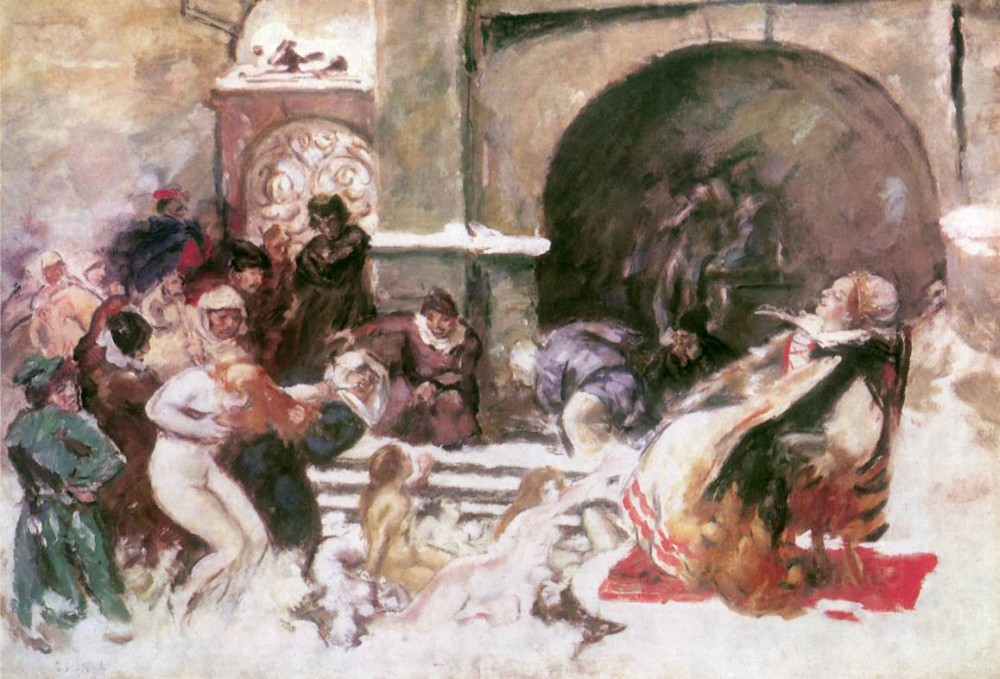The Bloody Mary is a legendary spirit that can see into the future if called upon. In some legends, she can be summoned by constantly calling her name in front of a mirror. Depending on whose version of the mythology you read, Bloody Mary could bring good luck or evil.
Even if the legend of Bloody Mary is made up, there are historical figures who could be the inspiration for the drink. Among them are Queen Mary I of England, and Elizabeth Bathory is also known as Bloody Mary, a murderous Hungarian noblewoman, and wicked witch who killed children.
Who Is the Real Face Behind Bloody Mary?
1. Bloody Queen Mary I of England (1516 – 1558)
Mary Tudor was born to Henry VIII of England and his first wife, the Spanish princess Catherine of Aragon. Mary’s early life was full of uncertainty, as her father’s multiple marriages posed a direct threat to her right to the throne and her very existence.

Both Henry’s desire for a son and Mary’s Catholic faith put them at odds with the Protestant Church of England. This conflict reached a head when Mary became queen in 1553, and her efforts to reestablish Roman Catholicism in England earned her the name “Bloody Mary.”
Following the failure of the Protestant rebellion led by Sir Thomas Wyatt the Younger, hundreds of Protestants were executed or burned at the stake as heretics. Mary, who had ruled for only five years, passed away at the age of 42 after a series of illnesses.
What will be remembered most about Mary is her unfortunate (but somewhat justified) nickname. Although it’s hotly debated, some credit her with giving her name to the controversial hangover cure cocktail made of vodka and tomato juice.
The origin of the scary tale that you’ll see a ghost when you say “Bloody Mary” three times into the mirror is even less clear. On the other hand, there is no evidence to suggest that Mary Tudor’s actions or misfortunes would have caused her to harbor eternal resentment toward the sleepover guests.
2. Elizabeth Bathory (1560-1614)
The “Blood Countess,” or Elizabeth Bathory (1560-1614), gained her infamous moniker because she was rumored to have bathed in the blood of her victims. Our sources tell us she did this in the hope that ingesting their blood would make her look younger. Maybe she started being cruel like that even when her husband was still around. Ferenc Nádasdy, a Hungarian hero who fought valiantly against the Ottomans, married her and gave her the achtice Castle, the family estate.

Nádasdy’s untimely demise in 1604 did not stop the bloodshed for another six years. She had already exhausted the supply of adolescent peasant girls in the nearby village and had begun to look further afield. The wealthy daughters of minor aristocrats were invited by Bathory to achtice to be educated in courtly manners. Instead of getting a proper education befitting a member of the court, they were ritually slaughtered.
It was discovered through an investigation ordered by the King of Hungary (but requested by worried, recently childless aristocrats) that for years, Bathory had been committing atrocities that made the torture scenes in “Game of Thrones” look like child’s play.
Some victims were scalded with hot tongs before being submerged in ice water. Some would get covered in honey and the ants would slowly eat them. Some of them would be killed in horrific ways like burning or mutilation. The more fortunate victims would simply be beaten to death.
Bathory was captured on December 30th, 1610, along with her four female henchwomen. During their trial, dozens of people testified against them. The people who helped Elizabeth were burned at the stake or tortured. However, it was decided that the countess should not be executed because doing so would tarnish the reputation of the upper class.
Instead, it was decided that Elizabeth would spend her remaining four years in solitary confinement in a windowless cell deep within a castle in a place called achtice.
It has been suggested that Bram Stoker’s 1897 novel “Dracula” was inspired by the gruesome history of “Bloody Mary” Bathory. It continues to be a major draw for visitors to the Achtice region. The local winery produces a bottle of wine called “Bathory Blood,” which is sold as a souvenir.
So Who Is Bloody Mary Based On?
The reply hinges on the nature of the ghost you imagine staring back at you. Queen Mary I of England: a wilting flower bathed in the blood of slain protestants? Mary, Queen of Scots, a headless, svelte monarch? How about the serial killer countess Bloody Mary Bathory, who literally soaked herself in the blood of young women?
Whichever it is, you wouldn’t want to see it in your candlelit bathroom mirror, much less meet it in a dark alley.
Hema is a full-time content editor at landscape insight. Here she researches and covers celebrity lifestyles and news. Outside of her professional life, she spends time on video editing, music, and networking. You can reach Hema at – [email protected] or on Our website Contact Us Page.








